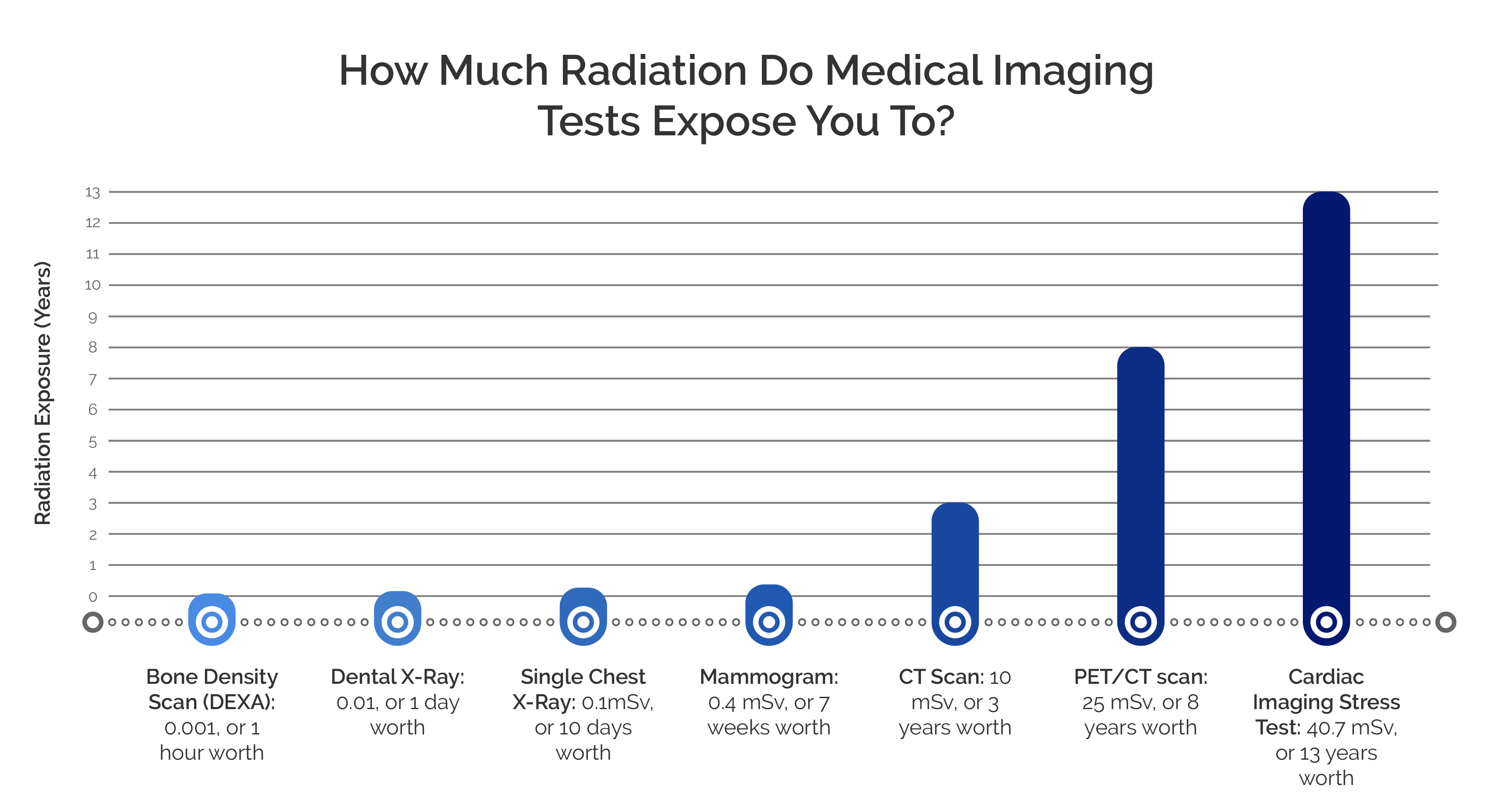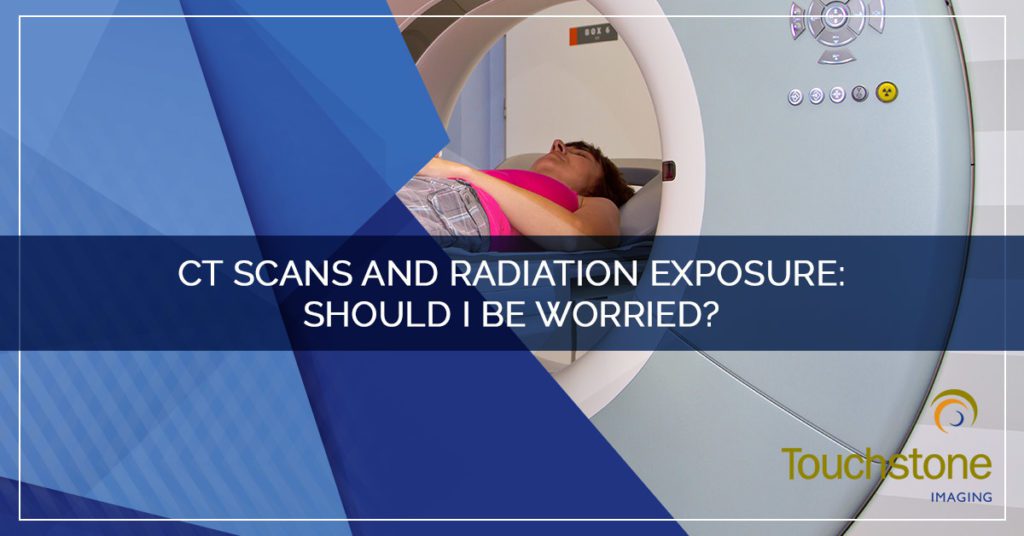Since 1980, the field of medical imaging has exploded. As technology advances, more diagnostic testing options are made available to aid in the successful diagnosis and treatment of potentially dangerous medical conditions much quicker. One of the biggest benefits of using medical imaging tests is to see inside the human body without the use of “exploratory surgery.” This saves people the discomfort and mitigates the risks inherent in surgical procedures. However, in recent years, more attention has been called to the side effects and radiation exposure during these test.
Join us in today’s post as we address some of the concerns and help clear up what is a myth and what are factually-based concerns you should pay attention to.
Radiation Exposure
First, it is important to understand that we are all exposed to radiation on a daily basis. Not that this makes it any safer, nor is it justification for being exposed to additional radiation for a medical imaging test, but it is something to be aware of. In fact, the average person is exposed to approximately 3 millisieverts (mSv) of radiation from natural sources, annually. Those who live in higher elevation, such as Colorado and New Mexico, or those who travel by plane frequently, are exposed to much more natural radiation.

Risk Vs. Benefit
When it comes to radiation exposure and medical imaging, there is a risk of adverse effects. However, exposure is minimal and should not cause a problem during isolated procedures. When you and your medical team are discussing your diagnostic and treatment plan, you should discuss your concerns. Generally, medical providers will not order a radiation-based imaging test without a good reason. Evaluate the pros and cons of getting the test done and weight the risks versus benefit. For instance, an abdominal/pelvic CT scan may result in three years’ worth of radiation exposure, but identification and removal of polyps or colon cancer may result in an additional three decades of healthy living!
Reduce Your Radiation Risk
Getting a medical imaging test is typically in your best interest to identify areas of concern and drive effective treatment plans. When you get your diagnostic test that uses radiation done, there are a few things you can do to reduce your radiation exposure:
- Don’t seek out getting unnecessary scans done.
- Use a lead apron to cover body parts that are not being imaged.
- Reduce radiation exposure in your home with radon testing.
- Consider less frequent medical imaging,
- Evaluate all your options.
- Keep track of x-ray exposure.
- Talk to your medical imaging technician.
At Touchstone Imaging, we pride ourselves on reducing the radiation risk to our patients by mitigating needless exposure. Our imaging centers use top-of-the-line equipment and procedures to ensure clear images the first time, significantly reducing the number of repeat tests performed. Fewer tests mean less exposure and less risk.
If you have heard that CT scans are unsafe and are concerned about the order for a radiation-based diagnostic imaging procedure, speak to your physician and seek out imaging centers that meet the standards of patient safety set forth by the American College of Radiology, like Touchstone Imaging. Contact us to for more information or to schedule your appointment today!


